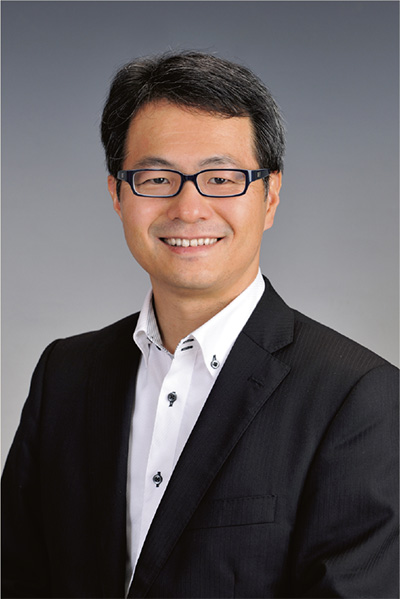Diplomatic Bluebook 2017
Chapter 4
Japan's Diplomacy Open to the Public
4.The Convention on the Civil Aspects of International Child Abduction (the Hague Convention) and its Implementation
The Hague Convention is designed to ensure prompt return of children who have been wrongfully removed from one contracting state to another. It is based on the idea that the custody (parental authority) of a child, in circumstances such as where the parents' international marriage has failed, should be decided in the state in which the child habitually resided. Furthermore, in order to ensure the opportunity for trans-boundary parent-child access, the Hague Convention stipulates that Contracting States should cooperate for realization of parent-child access.
This convention came into force in Japan on April 1, 2014. On the same date, the Act for Implementation of the Convention on the Civil Aspects of International Child Abduction was enacted. As of December 2016, 95 countries including Japan are party to the convention.
The Hague Convention is implemented through mutual cooperation among the governmental agencies designated as the Central Authority in Contracting States to the Convention. In Japan, MOFA assumes the role of the Central Authority. As the Japanese Central Authority, MOFA avails itself of the expertise of experts in various fields to implement the Convention appropriately, and communicates/cooperates with foreign Central Authorities, and provides assistance to the parties such as locating whereabouts of the child and arranging mediation services aimed at amicable resolutions.

In the two years and nine months between the entry into force of the Convention and the end-December 2016, MOFA received a total number of 229 applications: 118 applications seeking the return of the child and 111 applications seeking access to the child. Of these, 14 children returned from another country to Japan. Another 19 returned from Japan to another country. Also, there were many cases where access was secured. Japan is steadily implementing the Convention.
In February 2016, MOFA invited a former German judge, who had worked to improve the implementation of the Hague Convention in Germany, to Japan to share his expertise with the people who are involved in the Hague cases in Japan. In June, MOFA co-hosted the Asia Pacific Symposium on the 1980 Hague Child Abduction Convention with the Permanent Bureau of the Hague Conference on Private International Law (HCCH) and Waseda University to provide an opportunity to deepen the expertise of the people involved in the implementation of the Hague Convention and bolster the implementation structure. In the Symposium, 64 people from 21 countries and areas, mainly from the Asia-Pacific region, participated in lively discussions (See column “Taking part in the Asia Pacific Symposium on the 1980 Hague Child Abduction Convention”).
MOFA is also putting effort into public communication activities such as conducting seminars at diplomatic missions overseas or at domestic local governments, related organizations, etc. and distributing leaflets in multiple languages.

On June 29 and 30, 2016, MOFA, Waseda University, and the Permanent Bureau of the Hague Conference on Private International Law (HCCH) co-hosted the two-day Asia Pacific Symposium on the 1980 Hague Child Abduction Convention. I co-chaired a closed session to which representatives from Asian countries were invited to discuss various issues concerning the Hague Convention.
In the closed session, the participants were divided into four groups, and each group discussed four subjects, (1) State of habitual residence and rights of custody, (2) “Grave Risk” set forth in the Article 13(I)(b), (3) the Enforcement of Return Order, and (4) Time Frame, in 90 minutes for each subject. Each group remained in their respective rooms, while the moderators responsible for the respective subjects circulated between the groups. I moderated subject (1) with Justice Victoria Bennett of the Family Court of Australia.
I was a “co-moderator”, but Justice Bennett actually ran the sessions, giving easy-to-understand explanations based on her long experience, while I learned a lot next to her. Although the session used hypothetical cases prepared by the organizer, it was highly appropriate and ignited an active exchange of views in each group. Many of the representatives from non-Contracting States were not very familiar with the Convention, but I felt that they obtained a good grasp of the main issues under the Convention in an efficient manner through the sessions.
The session continued into the morning of the second day. The afternoon was devoted to a mock Hague mediation by Japanese lawyers and mediators. When I asked later, they told me that they had used a script created painstakingly by themselves from their experiences. After the mediation drew to a close, the “actors” took questions from the audience. Some overseas participants expressed a little surprise at the fact that judges engage directly in the in-court mediation in Japan. Pros and cons aside, I believe that we were able to show the world the distinctive features of Japanese in-court mediation.
Japan has been accumulating practical experience bit by bit since the entry into force of the Convention in April 2014. It certainly cannot be said that everything is going smoothly, and I sometimes become aware of challenges as I work on actual cases. Still, I feel that it is very important to present and share this experience worldwide, particularly in Asia, where many countries are still not parties to the Convention, in order to increase the number of Contracting States.
I hope that the representatives who participated in the symposium will return home and become the cornerstones for increasing the membership of the Convention.

